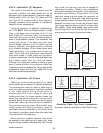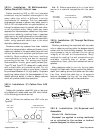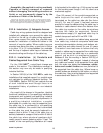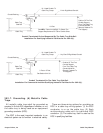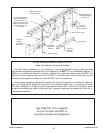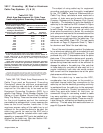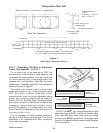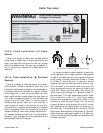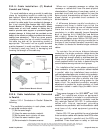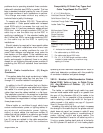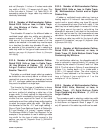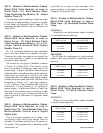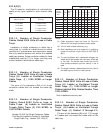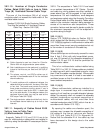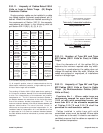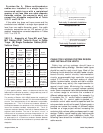
392.8. Cable installation. (C) Bushed
Conduit and Tubing.
For most installations, using a conduit to cable tray
clamp for terminating conduit on cable tray is the
best method. Where a cable enters a conduit from
the cable tray, the conduit must have a bushing to
protect the cable jacket from mechanical damage; a
box is not required
[See Section 300.15(C). Boxes,
Conduit Bodies, or Fittings - Where Required. Where
cables enter or exit from conduit or tubing that is
used to provide cable support or protection against
physical damage. A fitting shall be provided on the
end(s) of the conduit or tubing to protect the wires or
cables from abrasion.]
. There are some special
installations where the use of conduit knockouts in
the cable tray side rail for terminating conduit is
appropriate. This would not be a good standard
practice because it is costly and labor intensive, and
if randomly used may result in damaging and
lowering the strength of the cable tray.
392.8. Cable Installation. (D) Connected
in Parallel.
Section 310.4. Conductors in Parallel. States the
following:
The paralleled conductors in each phase, neutral
or grounded conductor shall:
(1) Be the same length.
(2) Have the same conductor material.
(3) Be the same size in circular mil area.
(4) Have the same insulation type.
(5) Be terminated in the same manner.
Where run in separate raceways or cables, the
raceways or cables shall have the same physical
characteristics. Conductors of one phase, neutral, or
grounded circuit shall not be required to have the
same physical characteristics as those of another
phase, neutral, or grounded circuit conductor to
achieve balance.
A difference between parallel conductors in
raceways and those in cable trays is that the
conductors in the cable tray are not derated unless
there are more than three current carrying
conductors in a cable assembly
[as per Exception
No.2 of Section 310.15(B)(2)(a) and Section
392.11(A)(1)]
. Where the single conductor cables
are bundled together as per Section 392.8(D) and if
there are neutrals that are carrying currents due to
the type of load involved (harmonic currents) it may
be prudent to derate the bundled single conductor
cables .
To maintain the minimum distance between
conductors, the single conductor cables should be
securely bound in circuit groups every three or four
feet using high strength plastic or stainless steel ties.
These circuit groups provide the lowest possible
circuit reactance which is a factor in determining the
current balance among various circuit groups.
For installations that involve phase conductors of
three conductor or single conductor cables installed
in parallel, cable tray installations have conductor
cost savings advantages over conduit wiring systems.
This is because the conductors required for a cable
tray wiring system are often a smaller size than
those required for a conduit wiring system for the
same circuit. No paralleled conductor ampacity
adjustment is required for single conductor or three
conductor cables in cable trays
[See NEC
®
Section
392.11(A)]
.
There were changes in the 1993 NEC
®
and 1996
NEC
®
for installations where an equipment
grounding conductor is included in a multiconductor
cable: the equipment grounding conductor must be
fully rated per Section 250.122. If multiconductor
cables with internal equipment grounding
conductors are paralleled, each multiconductor cable
must have a fully rated equipment grounding
conductor.
Section 250.122 now prohibits the use of standard
three conductor cables with standard size EGCs when
they are installed in parallel and the EGCs are
paralleled. There have been no safety or technical
31
Cable Tray Manual Cooper B-Line, Inc
Cable Channel Branch Circuit
Reprinted with permission from NFPA 70-1999, the National Electrical Code®, Copyright© 1998, National Fire
Protection Association, Quincy, MA 02269. This reprinted material is not the complete and official position of the National
Fire Protection Association, on the referenced subject which is represented only by the standard in its entirety.
Channel to Tray
Channel to
Channel



